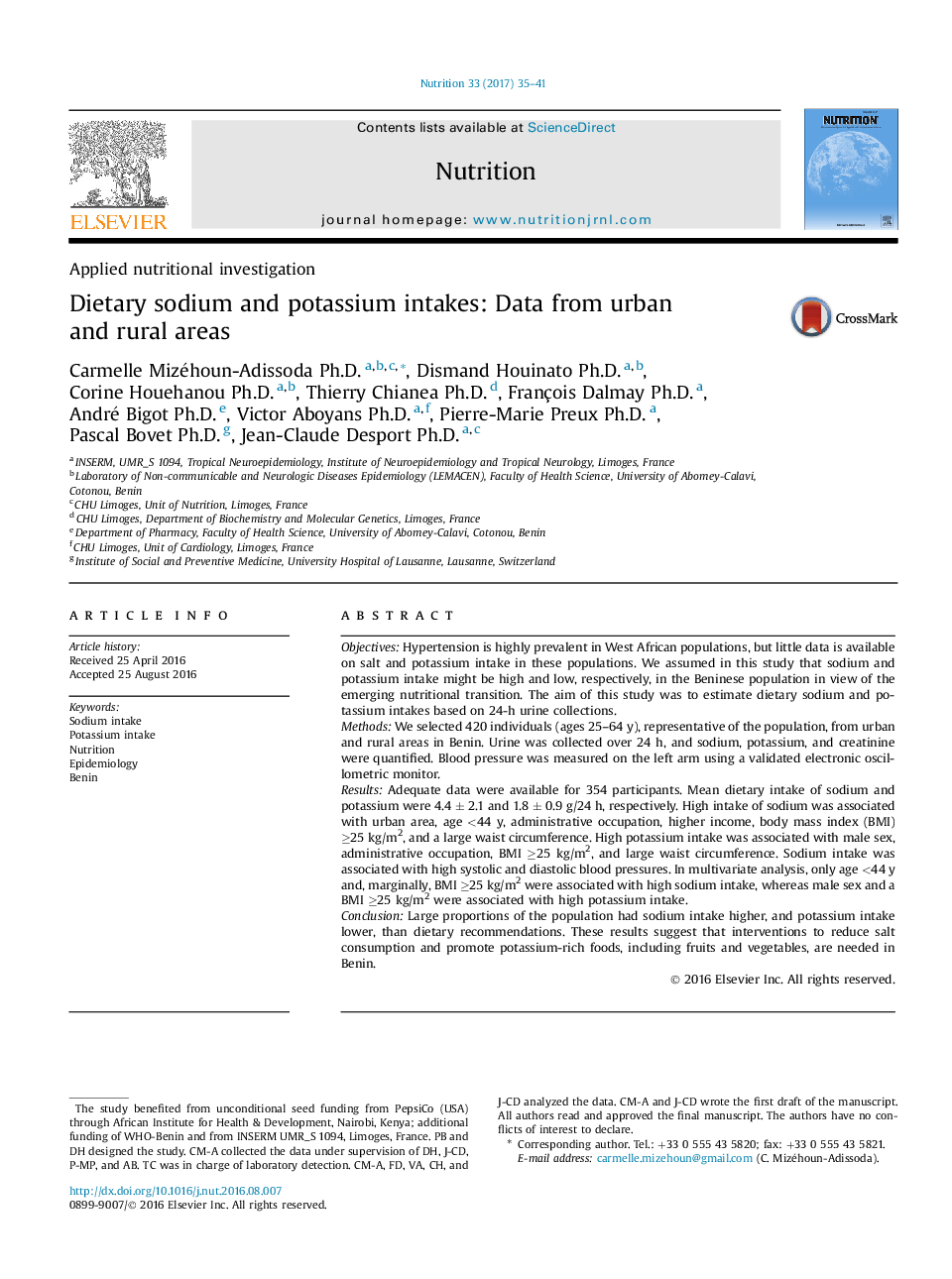| کد مقاله | کد نشریه | سال انتشار | مقاله انگلیسی | نسخه تمام متن |
|---|---|---|---|---|
| 5656929 | 1589664 | 2017 | 7 صفحه PDF | دانلود رایگان |
- Sodium intake was high among adults in Benin.
- Potassium intake was low among adults in Benin.
- Factors associated with intake of sodium and potassium were determined.
- Development of policies to control salt and potassium in foods is required.
ObjectivesHypertension is highly prevalent in West African populations, but little data is available on salt and potassium intake in these populations. We assumed in this study that sodium and potassium intake might be high and low, respectively, in the Beninese population in view of the emerging nutritional transition. The aim of this study was to estimate dietary sodium and potassium intakes based on 24-h urine collections.MethodsWe selected 420 individuals (ages 25-64 y), representative of the population, from urban and rural areas in Benin. Urine was collected over 24 h, and sodium, potassium, and creatinine were quantified. Blood pressure was measured on the left arm using a validated electronic oscillometric monitor.ResultsAdequate data were available for 354 participants. Mean dietary intake of sodium and potassium were 4.4 ± 2.1 and 1.8 ± 0.9 g/24 h, respectively. High intake of sodium was associated with urban area, age <44 y, administrative occupation, higher income, body mass index (BMI) â¥25 kg/m2, and a large waist circumference. High potassium intake was associated with male sex, administrative occupation, BMI â¥25 kg/m2, and large waist circumference. Sodium intake was associated with high systolic and diastolic blood pressures. In multivariate analysis, only age <44 y and, marginally, BMI â¥25 kg/m2 were associated with high sodium intake, whereas male sex and a BMI â¥25 kg/m2 were associated with high potassium intake.ConclusionLarge proportions of the population had sodium intake higher, and potassium intake lower, than dietary recommendations. These results suggest that interventions to reduce salt consumption and promote potassium-rich foods, including fruits and vegetables, are needed in Benin.
Journal: Nutrition - Volume 33, January 2017, Pages 35-41
